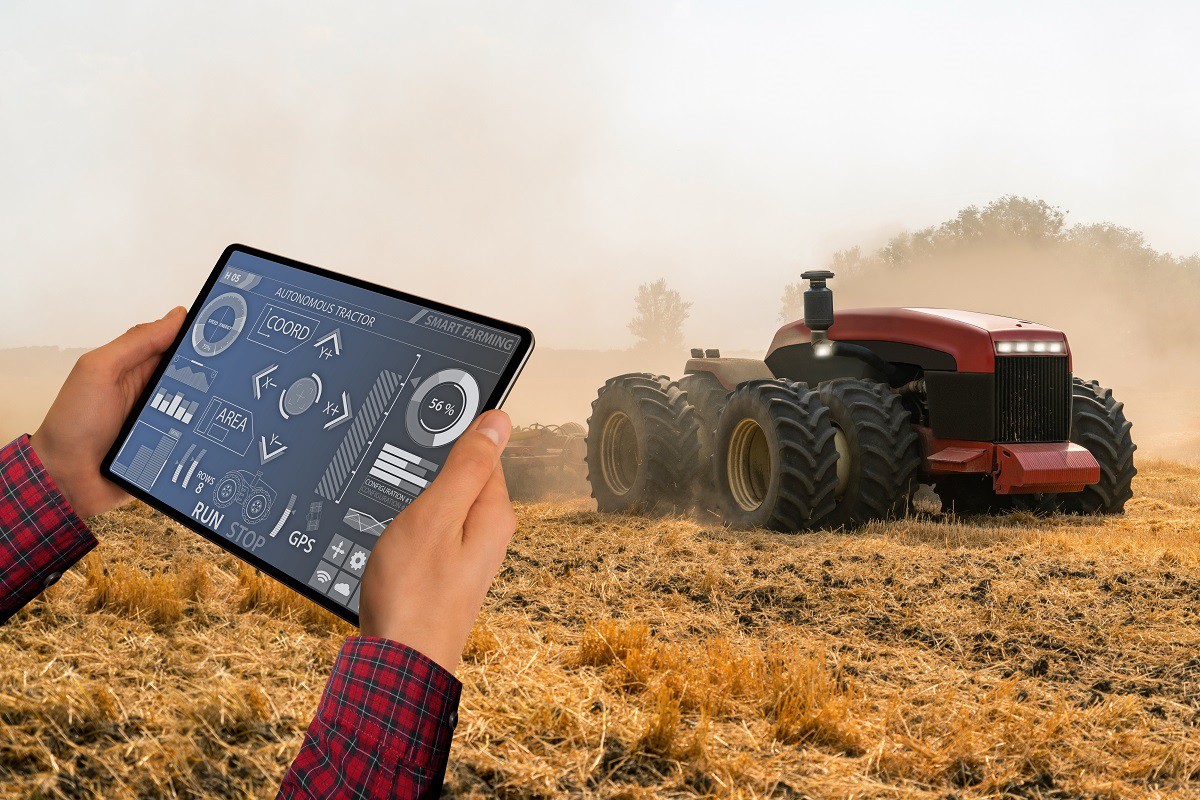Smart farming on the rise
22/02/2023
In this decade, smart farming technologies are expected to be the most important drivers of agricultural production.Supplying the world's growing population with food is one of the key challenges of the 21st century, especially in view of climate change. New technological advances in agriculture, so-called smart farming, represent a major opportunity to make optimum use of available resources and thus ensure global food security.
Current challenges in agriculture
While in past decades, farmers could often rely on their experience and intuition to harvest high yields, in times of climate change, need for lower fertilizer loads, and minimum usage of pesticides this experience is often of little use. Therefore, IT-based solutions, known as smart farming, are gaining growing market shares. These techniques include among others autonomously driving, machine learning methods in the field of data processing, remote sensing as well as robotics or smart spraying.Large markets for smart farming technologies
Worldwide, farmers recognize the high potential of smart farming and are therefore willing to invest in these technologies. While in the past, only large farms could afford such technologies, nowadays, a broad number of farms get access to these technologies. This development was catalyzed by yield mapping technologies. The reason for this is the fact that a growing number of harvesting machines are sold with the corresponding measuring methods as a standard. In North and South America, for example, almost every second agricultural machine sold is equipped with smart farming technologies, such as spatial yield measuring or remote sensing. A similar development can also be expected for Europe, as this market is catching up to the American counterpart in the last years. New era of farming
This trend is likely to cumulate in many innovations in smart farming. Today, for example, farmers can already choose from a range of over 50 agricultural robots. Currently, the focus in this segment is particularly on solutions for automated crop protection such as precision or even smart spraying. However, autonomous systems are also in the starting blocks in almost all other areas of agriculture such as planting or harvesting. With wider availability of smart farming technologies, task profiles for farmers will grow, especially in response to data management. Therefore, it can be assumed that new software developments will enter the market that help farmers to analyze and use data to use input factors such as seeds, fertilizer, biocides or machinery as efficiently as possible. To conclude, the next green revolution might not primarily be about harvesting crops but rather about harvesting data.Interested in further information?
Please do not hesitate to contact:Dr. Isabelle Symonds, phone +49 6201 9915 10,
Isabelle.Symonds@SchlegelundPartner.de Martin Beck, phone +49 6201 9915 11,
Martin.Beck@SchlegelundPartner.de
While in past decades, farmers could often rely on their experience and intuition to harvest high yields, in times of climate change, need for lower fertilizer loads, and minimum usage of pesticides this experience is often of little use. Therefore, IT-based solutions, known as smart farming, are gaining growing market shares. These techniques include among others autonomously driving, machine learning methods in the field of data processing, remote sensing as well as robotics or smart spraying.Large markets for smart farming technologies
Worldwide, farmers recognize the high potential of smart farming and are therefore willing to invest in these technologies. While in the past, only large farms could afford such technologies, nowadays, a broad number of farms get access to these technologies. This development was catalyzed by yield mapping technologies. The reason for this is the fact that a growing number of harvesting machines are sold with the corresponding measuring methods as a standard. In North and South America, for example, almost every second agricultural machine sold is equipped with smart farming technologies, such as spatial yield measuring or remote sensing. A similar development can also be expected for Europe, as this market is catching up to the American counterpart in the last years. New era of farming
This trend is likely to cumulate in many innovations in smart farming. Today, for example, farmers can already choose from a range of over 50 agricultural robots. Currently, the focus in this segment is particularly on solutions for automated crop protection such as precision or even smart spraying. However, autonomous systems are also in the starting blocks in almost all other areas of agriculture such as planting or harvesting. With wider availability of smart farming technologies, task profiles for farmers will grow, especially in response to data management. Therefore, it can be assumed that new software developments will enter the market that help farmers to analyze and use data to use input factors such as seeds, fertilizer, biocides or machinery as efficiently as possible. To conclude, the next green revolution might not primarily be about harvesting crops but rather about harvesting data.Interested in further information?
Please do not hesitate to contact:Dr. Isabelle Symonds, phone +49 6201 9915 10,
Isabelle.Symonds@SchlegelundPartner.de Martin Beck, phone +49 6201 9915 11,
Martin.Beck@SchlegelundPartner.de